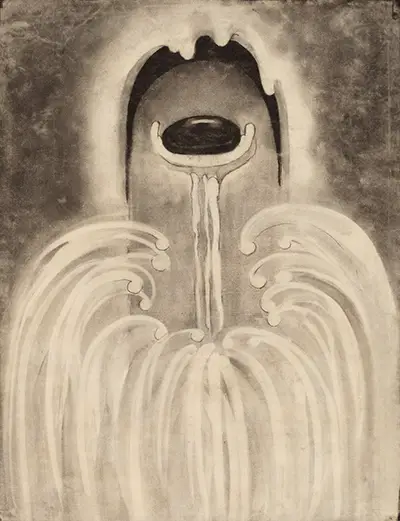There were a number of charcoal drawings by Georgia O'Keeffe from the early 20th century which was an important chapter in her progression. Drawing No. 2 - Special is specifically dated at 1915 and the artist worked almost exclusively with charcoal during this period. She was attempting to really express herself here, similar to how the Abstract Expressionists would work in the years that followed - see the likes of Pollock and Rothko for examples of that. Eventually O'Keeffe would perhaps find charcoal to be a little too limiting and so she moved on to different tones of oils which then started to attract new followers to her oeuvre. It was, however, the charcoal drawings which really started her success story and so they must always be given prominence when discussing the journey that she went through over the course of her professional life.
This highly imaginative artwork, titled simply as Drawing No. 2 - Special, captures a dream-like world in which forms are very hard to determine. There is a series of bright lines which curve over to create a wave-like effect in the bottom half of the artwork. One then reaches up vertically, holding in place a black egg-shaped object which captures the light from above to suggest a round shaped surface. There is then an overriding structure which continues above and a roughly sketched background to complete the piece. There is a curiosity which strikes you when viewing abstract pieces such as these, with more questions than answers appearing within your mind. The waves would continue into other O'Keeffe drawings from this year, and were clearly a popular addition for the artist. The 1915 series has since been analysed in depth, and its importance now much better understood than it would previously have been.
This piece can be found in the National Gallery of Art in Washington, D.C., USA where it sits alongside a great mixture of art from across the ages. Leonardo da Vinci's Ginevra de' Benci remains its highest profile piece, in part due to it being the only artwork from this famous master to be found on permanent display within the country. The Emperor Napoleon in his Study at the Tuileries from 1812 was an historically significant painting by Jacques-Louis David and this artwork can also be found within the institution's permanent display. Rembrandt, one of the true North European masters, can also be found well represented here, with titles including The Mill and Self Portrait with Beret and Turned-Up Collar, though these are all just a small selection from what is a truly breaktaking collection of art, impressive both in size and also quality.
